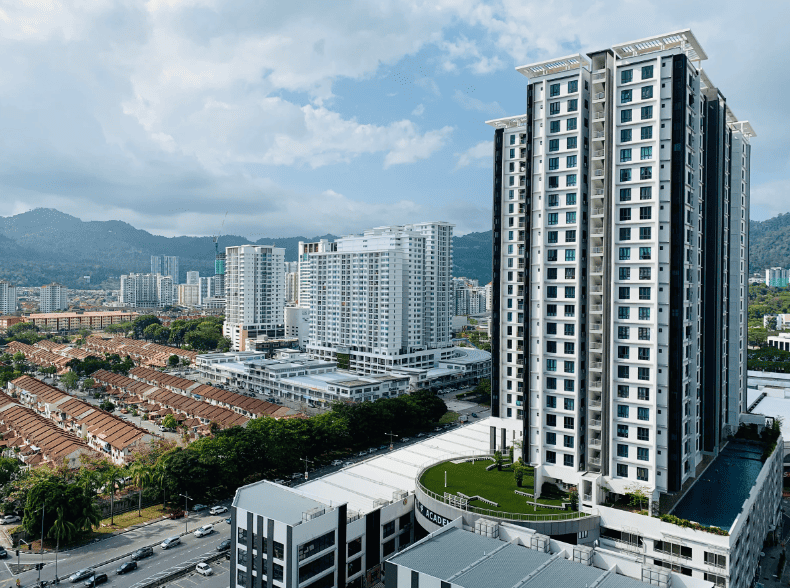Occasionally, one will come across arguments that the resources used for public infrastructure development could be used for more immediate needs, such as public welfare programs.
While these arguments can be emotionally powerful, they often purposefully ignore the long-term benefits of good public infrastructure investments to communities, particularly in fostering more competitive local businesses.
Table of Contents
Local businesses are especially important for any community because, unlike businesses set up by outside investors, the value local businesses create tends to remain within these communities rather than being taken out of them.
This generated value supports other local businesses, generates tax revenues, and funds both additional public infrastructure and welfare programs. This web of value creation simply would not be sustainable if all public funds are expended for short-term needs.
However, these benefits could only be realized if public infrastructure is built with the long-term good of the community in mind.
After decades of trial and error, infrastructure development in the Philippines seems to now be hitting its stride, with new roads, railways, airports, and digital connectivity projects now set to not only benefit individuals or foreign investors but also local entrepreneurs.
Let’s delve into how good public infrastructure planning serves as a catalyst for boosting local businesses.

1) Good Public Infrastructure = Enhanced Accessibility and Connectivity
Well-maintained roads, bridges, and digital communications systems enhance accessibility for businesses and customers alike.
Expanding connectivity infrastructure to underserved areas allows businesses to reach more customers and also makes it easier for them to get in touch with potential partners and investors across geographical boundaries.
These benefits can ultimately ensure that local businesses are better able to thrive and return value to their communities.
2) Good Public Infrastructure Improves Logistics and Supply Chains
Without sufficient public logistics and transportation networks, the cost of doing business may become too much for local businesses to bear, especially in an archipelagic country like the Philippines.
As it is, domestic imports often need to be transported by ship, plane, or through local road networks with uneven quality. To further bring down the cost of doing business and empower more local entrepreneurs, improvements to local logistics and transportation networks are vital.
We don’t have to look far to find an example of this principle in action. In Cebu, a consortium composed of Aboitiz InfraCapital, GMR Group, and Megawide Construction Corporation is in the process of further developing Mactan-Cebu International Airport (MCIA), a facility that serves as a key piece in the region’s logistics capabilities.
Since the late 2010s, improvements in the MCIA have continuously resulted in gains for Visayas-based international exporters, as well as local businesses seeking to expand their reach to other parts of the Philippines.
With this experience in hand, these benefits may soon be replicated or improved upon in the Philippines’ other airports and transportation hubs.
3) Good Public Infrastructure Supports Innovation and Entrepreneurship
Educational institutions, reliable transportation, and digital infrastructure are necessary components for innovation and entrepreneurial ecosystems.
These public infrastructure assets make it easier not only for entrepreneurs and product developers to interact in person but also remotely, increasing the odds of creating successful local businesses.
In Singapore, the country’s vaunted innovation ecosystem was the result of decades of comprehensive public policy planning with a strong infrastructure component. Universities, research centers, and strategically important tech businesses were intentionally located close to each other and linked with mass transit options to increase the chances of collaboration and innovation.
While Singapore is often considered to be an outlier in policy development circles, cities in the Philippines could also emulate some of its successes in fostering entrepreneurship and innovation by funding institutions of higher learning, encouraging ties between leaders in business and the academe, and investing in the linkages needed to support these.
4) Good Public Infrastructure = Stronger Foundations for Economic Growth
Good public infrastructure lays the foundation for sustained economic growth. Assets like better roads, abundant freshwater supplies, secure 5G networks, and efficient airports all help contribute to lower base costs for businesses, allowing them to reinvest more funds into their development.
This inevitably results in increased local job creation that results in more local economic activity that, in turn, leads to more tax revenue for funding public works and welfare. This positive cycle results in a more hospitable environment for local businesses and other community stakeholders.

5) Good Public Infrastructure = Resilience to External Shocks
Lastly, good public infrastructure acts as a buffer during times of crisis — an important consideration in a country that’s at the forefront of the global climate crisis.
Well-prepared communities with resilient infrastructure can recover more quickly from natural disasters or other unforeseen events. Businesses benefit from this resilience, as they are better equipped to maintain operations and provide much-needed employment in the aftermath of serious catastrophes.
The relationship between public infrastructure and local businesses is symbiotic. Well-planned infrastructure creates the conditions that businesses need to be competitive while still maintaining high-quality outputs. Wherever it’s available, better infrastructure also fosters closer collaboration, driving innovation and entrepreneurship in the process.
Because infrastructure has such a strong capacity for uplifting less-advantaged businesses in underserved communities, Philippine policymakers should recognize the interconnectedness of good public infrastructure, local businesses, and community development.
By looking beyond infrastructure development in crowded mega-cities and, instead, prioritizing inclusive public infrastructure in underdeveloped regions, a more equitable distribution of entrepreneurial opportunities and a more resilient national economy can be achieved.



